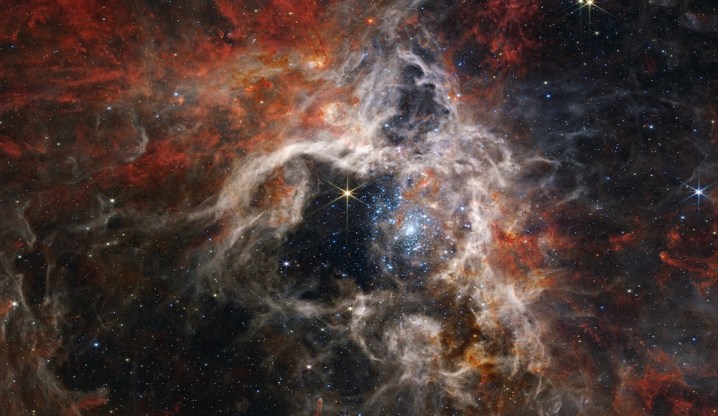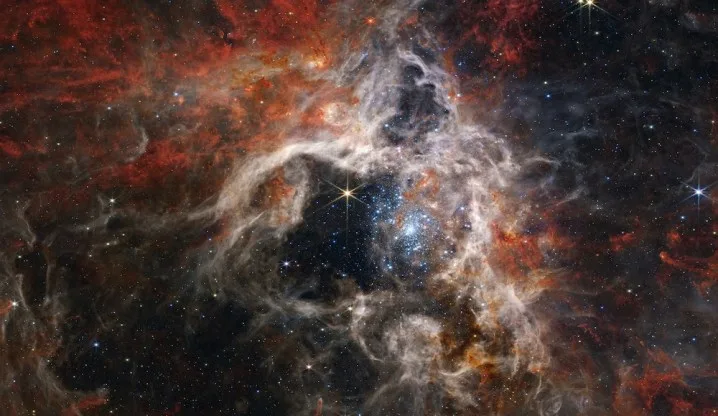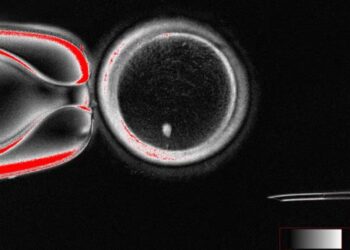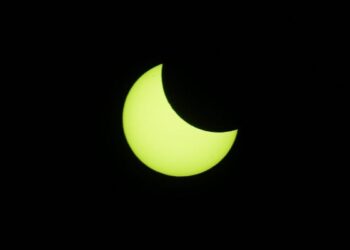Select Language:
The Hubble Space Telescope has recently captured a stunning image of the vibrant star-forming region known as the Tarantula Nebula. This nebula, named for its intricate, web-like structure, resides in the Large Magellanic Cloud, a satellite galaxy of the Milky Way. It is a focal point for astronomers studying the dynamics of star formation and evolution.
The latest image showcases the periphery of the nebula rather than its dense center. While the core is home to massive stars up to 200 times our sun’s mass, the outer edges present a more tranquil scene.
According to the Hubble scientists, “The area depicted in this image is characterized by soft blue gas, patches of brownish-orange dust, and a scattering of multicolored stars.” They elaborate that the stars obscured by the dust appear redder due to the dust’s tendency to absorb and scatter blue light more effectively than red light. As a result, the red light reaches our observations more readily. The image integrates various wavelengths, including ultraviolet, infrared, and visible light.
“By examining dusty nebulae in the Large Magellanic Cloud and other galaxies through Hubble’s observations, scientists can study distant cosmic dust grains, enhancing our understanding of their role in the birth of new stars and planets,” they add.
Hubble has previously photographed the Tarantula Nebula, with notable images released in 2023 and 2020. This nebula gained further recognition when the James Webb Space Telescope selected it as a significant target, producing a breathtaking image in 2022 that highlighted its rich details.

Young stars emit significant amounts of radiation and shine brightly, often surpassing older stars like our sun. Star formation occurs when dense clusters of dust and gas form, gradually attracting more material through gravity, which leads to the creation of protostars.
While there is some debate about the exact rate of star formation in the Milky Way, it is generally accepted that our galaxy produces many more stars than the nearby Andromeda galaxy. The Large Magellanic Cloud, being a smaller galaxy, has a surprisingly high rate of star formation and is conveniently nearby, making it a prime location for studying how stars come to be. Telescopes like Hubble and James Webb are continuously unveiling new insights into star formation in this dynamic galactic neighbor.







